
Xplor reconnects kids to nature and helps them find adventure in their own backyard. Free to residents of Missouri.


































Stay in Touch with MDC news, newsletters, events, and manage your subscription

Xplor reconnects kids to nature and helps them find adventure in their own backyard. Free to residents of Missouri.

A monthly publication about conservation in Missouri. Started in 1938, the printed magazine is free to residents of Missouri.
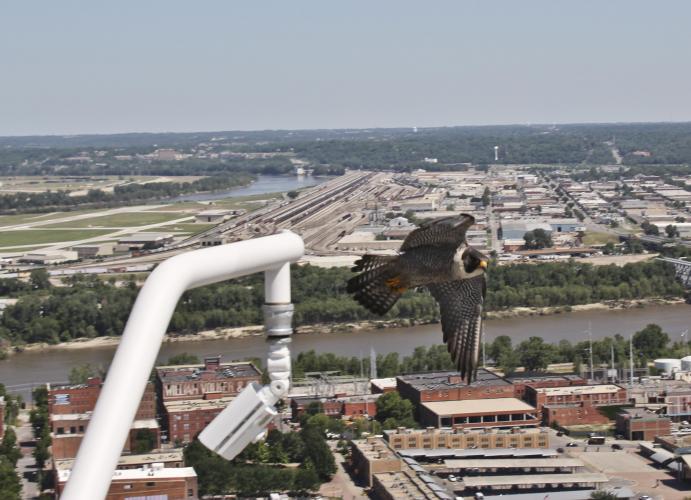
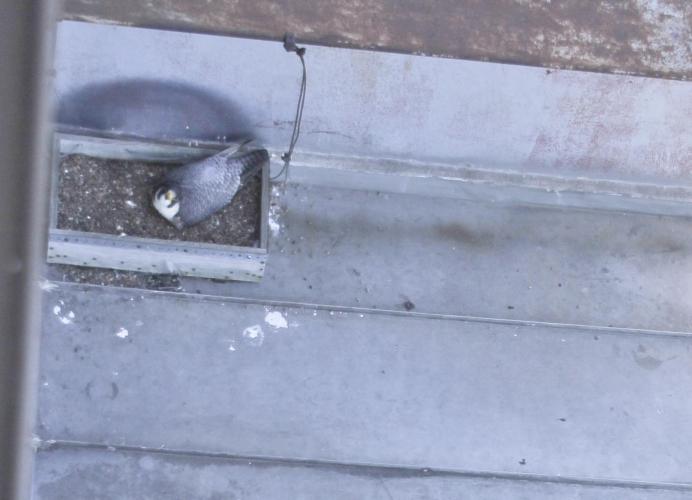
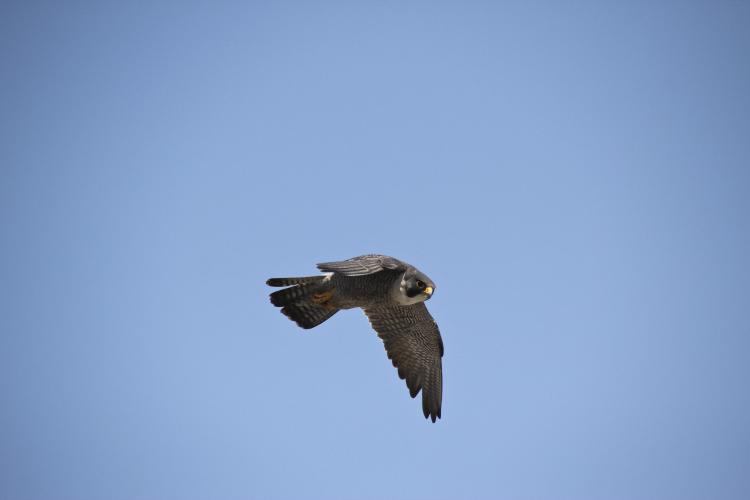
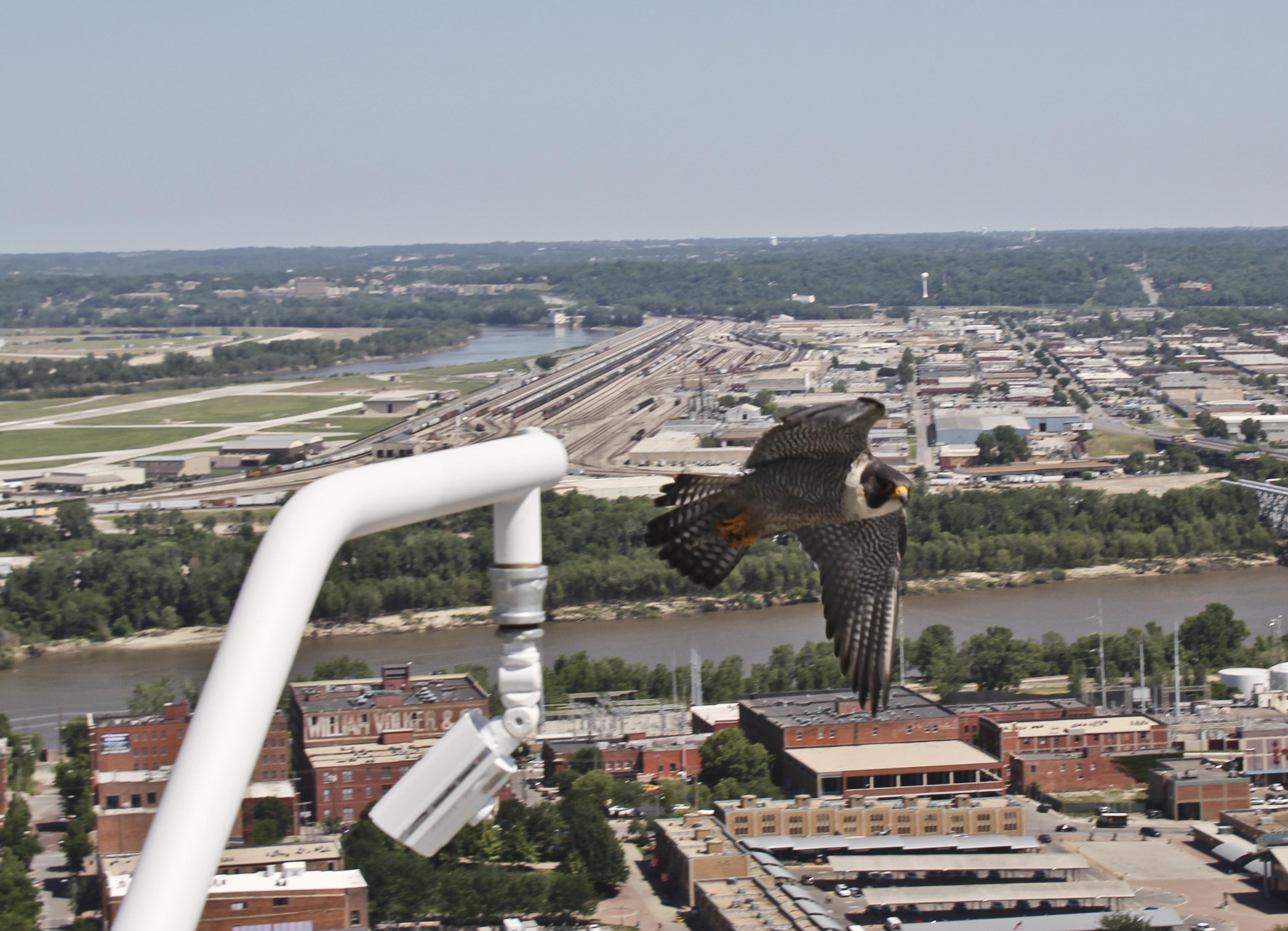
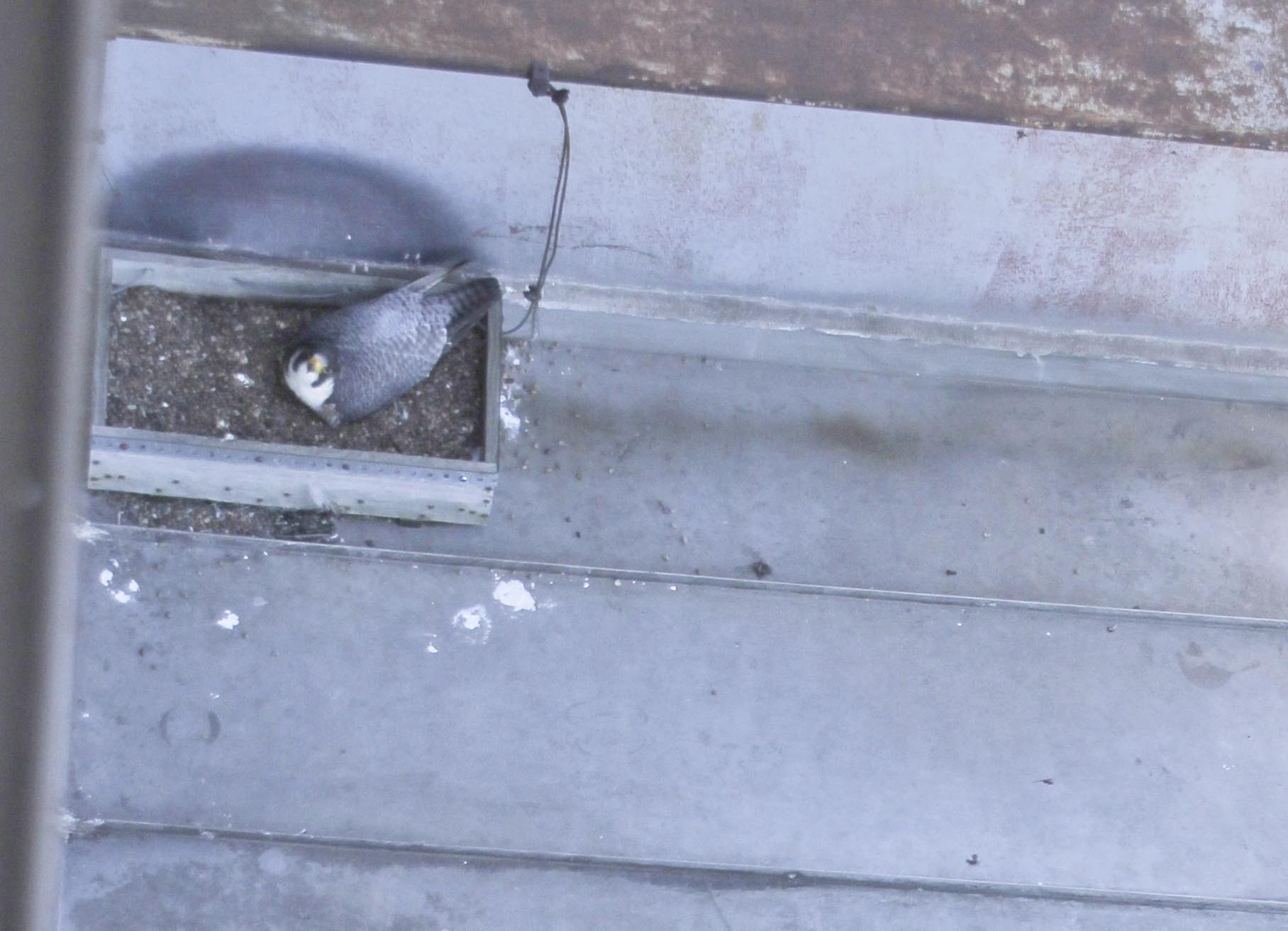
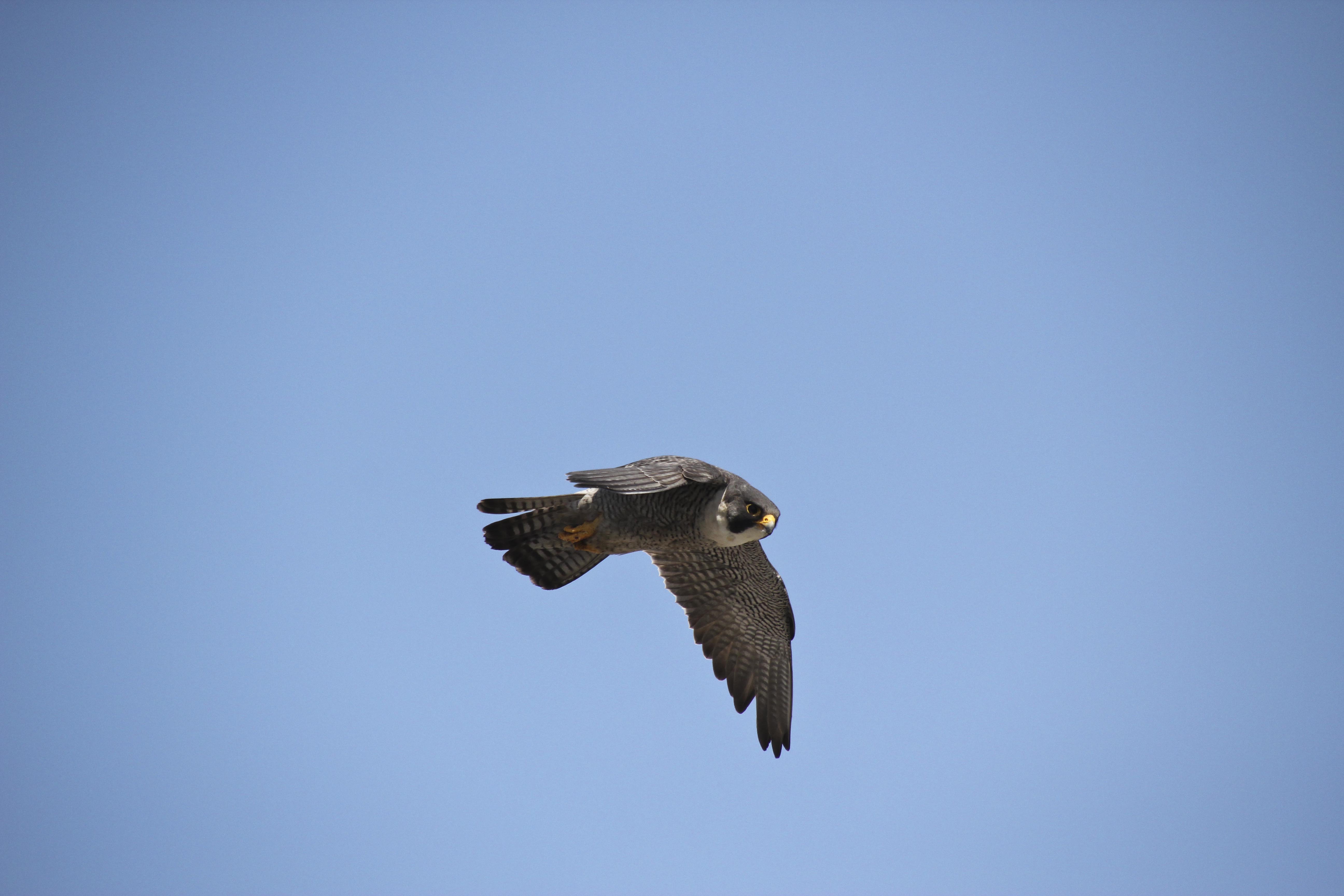
KANSAS CITY, Mo -- Rising air currents held a peregrine falcon aloft above this city’s skyscrapers. To onlookers atop the 30-story Commerce Tower at 911 Main St. the bird was a distant, dark shape floating effortlessly in mid-air. But then, the raptor cupped its wings into an aerodynamic "V" and dived in a 200-mph “stoop” toward the onlookers. In an eye blink the falcon went from distant to near and then veered overhead back into blue sky.
“Wow, that was fantastic, I’m glad I’m not a pigeon,” said Craig Cooper, a senior vice president for NAI Capital Realty, which manages the building.
Falcons feed on pigeons but this dive was a protective-parent move. A peregrine pair is tending a nest on a Commerce Tower ledge near the roof. A chick pecked its way out of an egg shell about 10:15 a.m. on Monday (May 21), and another hatched later in the day, according to building employees watching on a computer linked to a rooftop camera.
The aerie is the state’s most successful peregrine falcon nesting site in a two-decade re-introduction program, said Joe DeBold, an urban wildlife biologist for the Missouri Department of Conservation (MDC). MDC works in partnership with private businesses that own or manage tall buildings in cities to restore populations for a raptor that is endangered in the state.
Young falcons were released at this site in 1991 and 1992. One of those birds and a mate, the latter hatched in St. Louis, successfully nested at Commerce Tower in 1997. Since then, the nest site has been used by various pairs. Biologists counted 15 chicks “fledged” or raised successfully at the nest from 2005 through 2011.
The territorial falcons feed on birds such as pigeons, starlings or waterfowl. In Kansas City, they hunt among the tall buildings or in the trees lining the nearby Missouri River. Workers Downtown can sometimes see them flying and taking prey outside office windows.
“They’ve got everything they need here to do well,” DeBold said. “The river adds another food source with waterfowl species.”
DeBold is monitoring five peregrine falcon nest sites in the metro area this spring, including one near the Country Club Plaza and three on smokestacks at Kansas City Power & Light Co. generating plants. The Commerce Tower site, though, through the years has been the most successful. DeBold and building managers inspected the nest on Monday by peering down at the ledge from the roof.
Peregrine falcons originally nested in limited numbers on high outcrops such as ledges in the Missouri River bluffs. Numbers nationwide declined drastically after World War II as the DDT pesticide weakened egg shells and harmed preproduction. The ban on DDT and restoration efforts enabled peregrine falcons to be taken off the national endangered species list in 1999. But they remain endangered and in low numbers in some states including Missouri.
A web camera with live video of a peregrine falcon nest with chicks in St. Louis is available on the MDC website at http://1.usa.gov/yiT6LZ.
MDC hopes in future years to provide streaming video of the falcon nest at Commerce Tower. Currently, there is live video of the nest on a computer screen for visitors to view in building lobby. The birds started tending the nest in March and young should be fledged and gone by mid-July.
Sometimes young falcons learning to fly flutter downward but are not able to return to the nest. Anyone finding a young peregrine falcon on the sidewalk Downtown is asked to contact the security desk at the west, ground-floor entrance to Commerce Tower. DeBold will put them back on the ledge.
Cooper, an ardent bird watcher, said the falcon watching is a treat for Downtown workers. The birds also reduce problems due to pigeons.
“It feels like a partnership,” he said. “We provide the falcons with a nest box, they alleviate the pigeons.”
But the aerial show is worthy, too.
“Knowing we have the fastest bird in the world perched here,” Cooper said, “it’s a privilege.”